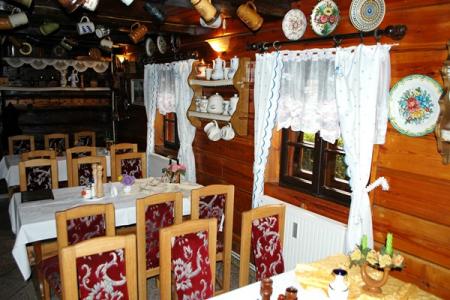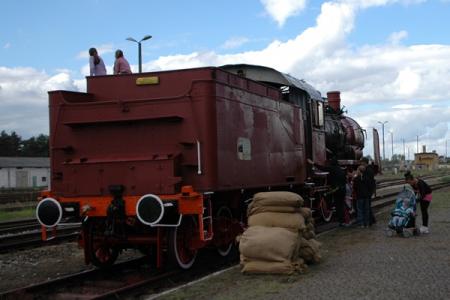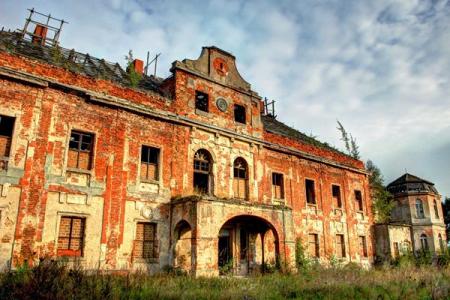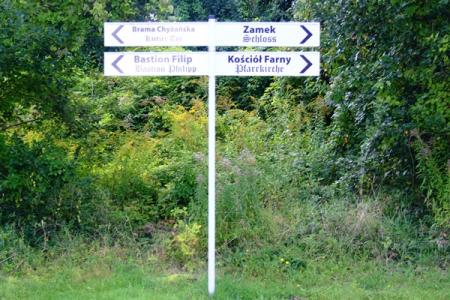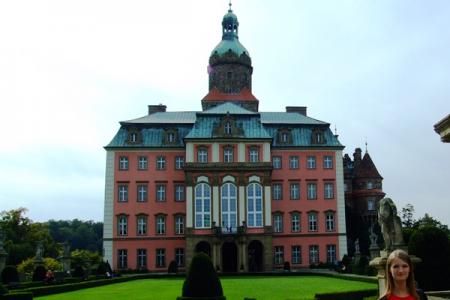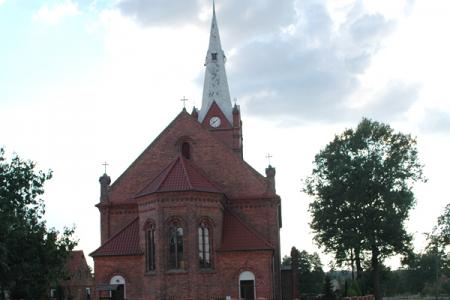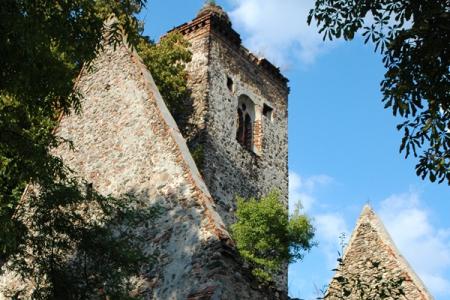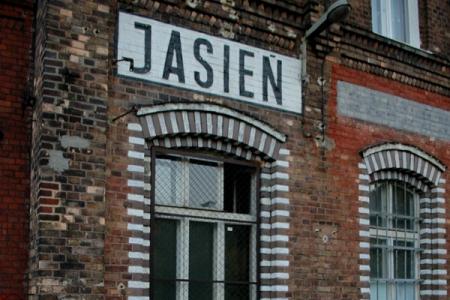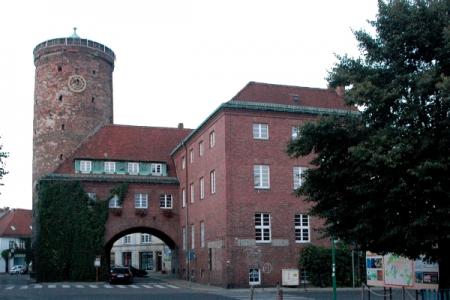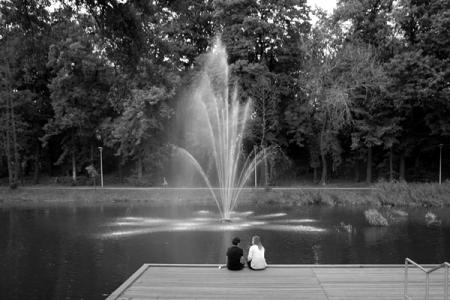
Loco-Picnic in Żagań
On the occasion of 100th anniversary of Żagań railway station a family picnic was organized. During this event an exhibition of souvenirs could be seen as well as a restored locomotive from 1918 or the staging of “the Great Escape” of war prisoners by train. An additional attraction was the possibility to look inside the locomotives: kids could feel like a train driver :)
Sucha Dolna (Germ. Nieder Zauche)
In the Sucha Dolna village there is a monumental palace complex from XVII-XIX century comprising a palace, a manor, and a park from the beginning of XX century.
The palace was built in baroque style in 1681 and in the beginning of XIX century it was rebuilt in classicistical style. It used to have rich decorations of the elevation and inside baroque stuccowork.
Kostrzyn nad Odrą (Germ. Küstrin) – Old Town
During World War Two about 95% of the town was destroyed. For a couple of years the town had very little inhabitants. Only after a paper factory was built there in 1954 did the town start to live again.
Since 2004 the town holds Przystanek Woodstock.
Old town has never been rebuilt: names of streets and signs showing the way to the church and the castle were symbolically placed among the remainings of ruins.
Książ Castle (Germ. Fürstenstein) in Wałbrzych
The castle from XIII has been rebuilt several times. In 1941 it was confiscated by the Nazis who probably wanted to create the main quarter for Hitler there. After World War Two till August 1946 the Red Army stationed there.
The castle and its chambers can be visited (in English or German prior to a telephone or Internet booking).
Złotnik (Germ. Reinswalde)
In Złotnik except for the ruins of a gothic church there is also a currently-used church of Saint John the Baptist (built in XIX century, renovated after World War Two).
By the ruin of the church there is a German cemetery from the breakthrough of XVII and XIX century which was devastated after 1945 (not many German graves remained) and a Polish one founded after 1945.
Złotnik (German: Reinswalde): ruin of a Gothic church of the fourteenth century
The church was built of stone. The building is surrounded by a stone wall of the fifteenth-sixteenth century to the gate of the eighteenth century
Unfortunately, the church is in ruins and at any time may collapse: admission strictly prohibited.
Lubsko (niem. Sommerfeld)
Monuments that can be found in Lubsko:
Church of the Visitation of the Virgin Mary from second half of the XIII century
Town hall built in 1580-1582
Castle (currently used by the health resort)
Pachołków Tower from XV century
Church of the Most Sacred Heart of Jesus from 1908

